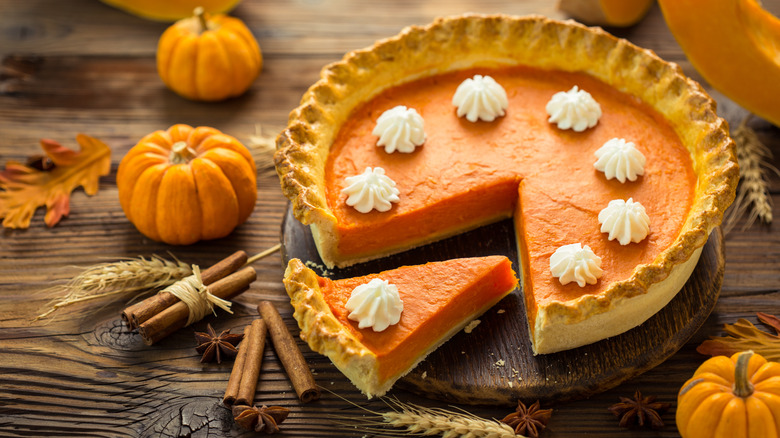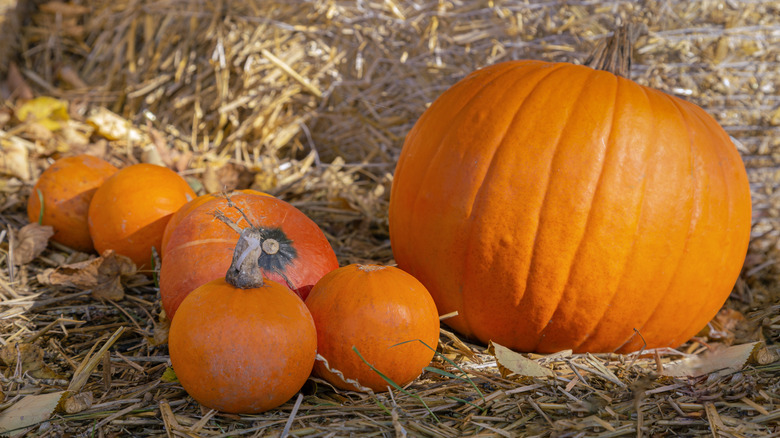The Main Difference Between A Pie Pumpkin And The Kind You Carve
It seems like earlier and earlier every year that pumpkins take their seasonal place on our menus, and according to Market Watch, it's true. Dunkin' has already announced that we're close to one month away from the start of pumpkin season, and Better Homes and Gardens expects an announcement from Starbucks any day now.
While the Starbucks PSL might be the most iconic illustration of pumpkin flavoring, it's worth remembering that the classic pumpkin pie will be making a comeback as well. Maybe you're thinking that this year you'll skip out on the canned pumpkin, and make all of your ingredients from scratch? While that's a noble sentiment, you should make sure you're looking in the right part of the pumpkin patch before you get too far along in your plans. It might be tempting to turn the leftover scraps from your jack-o'-lantern into a sweet treat, but there are a lot of differences between the pumpkins used for carving, and their more palatable cousins that are baked into your favorite fall pie.
Pie pumpkins tend to be sweeter and more dense
The key differences between pumpkins are their flavor and their flesh. According to She Knows, pie pumpkins, which are often referred to as sugar pumpkins, are comparatively sweeter to carving pumpkins. They also tend to have thicker flesh underneath their orange exterior, which ultimately means there is going to be more pumpkin to use for pie making. They also tend to have a better texture that's more suited to mixing it into a smooth batter. As noted by My Fearless Kitchen, instead of the stringy chunks that folks carve out of their jack-o'-lanterns every year, you'll find a more dense interior to these sweet gourds; think more butternut squash than spaghetti squash. All these qualities make sugar pumpkins perfect for making pies and other baked goods, and also kind of terrible for carving.
It can be hard to tell the difference between these two pumpkins at a glance. My Fearless Kitchen mentions to consider that there might be some variation in their colors, but the best signifier is their size. Sugar or pie pumpkins are often significantly smaller than carving pumpkins. Being that they're denser, they'll also feel heavier for their size than carving pumpkins when you pick them out at the grocery store or farmers market. According to 21 Oak, a well-attached brown stem is the best sign to knowing you have a perfectly ripe pumpkin to turn into a crowd-pleasing pie.

